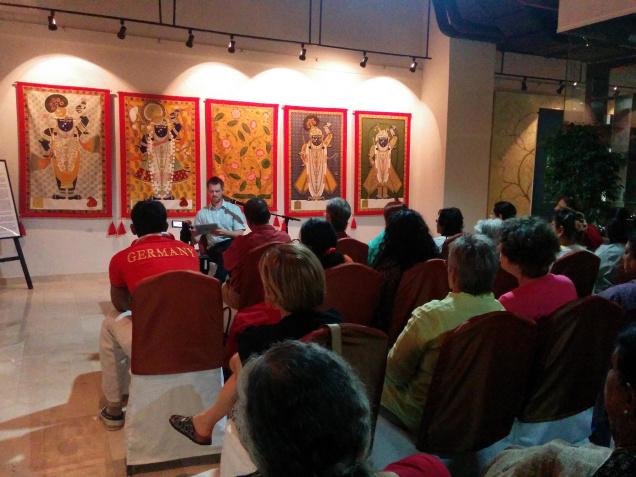
Mark Balmforth’s engaging talk on the root diggers and dyers of Jaffna time-travelled through history
Inside the towering and majestic Leela Palace hotel emerges the forgotten tale of a lost people; the ‘chay’ root diggers and dyers of Jaffna. A gathering of around 50 people were present to listen to an engaging talk aptly titled ‘A Colour of Tragedy and Opportunity’ by Mark Balmforth, a doctoral student from Columbia University. As a part of his thesis on the social changes of Tamils in Jaffna, Balmforth has embarked on a journey to unearth the ‘chay’ root or chayaver(Srilankan Tamil), and the hands that dug them. He has spent eight months in Madurai learning Tamil, and travelled to Jaffna in search of their story.
This root (Oldenlandia umbellata) still grows commonly across the coastal areas of Andhra, Tamil Nadu, and Kerala, however the prime variant is found in the northern Tamil regions of Sri Lanka. The root itself is a long, wiry branch that stretches deep beneath the earth, and to procure a mere handful takes a laborious few hours. Once sun-dried, powdered, and chemically consolidated through a series of boiling, it yields a scarlet dye that can be toned to red, orange, and purple. It was once used for fabric, clothing design, baskets, and other daily products. It was also used medicinally as a haemostatic. Unlike indigo and its historical trajectory which is widely known and documented, thechayaver has been neglected to a point of oblivion.
Balmforth delves into the social history of the community who worked with this root as bonded labourers during the colonial era first during Dutch rule, and later British. They belonged to the lowest strata of the caste system and were collectively referred to as ‘Verkuthi’ — literally root diggers. However other than existing as a low-caste community, it is unclear as to what their rightful origins were as far as Balmforth has hitherto discovered. “I need to get arm-deep into evidence before I can grasp the subject fully, just like with the actual root,” he remarks.
For colonial trade and revenue purposes these people through generations were forced into the occupation but with the commencement of synthetic dye production from 1850 onwards, both the indentured labour and the art of dyeing with the chayaver came to an end. A community once depended upon to provide the colour of passion, power, and blood seems to simply vanish in terms of occupational and artistic existence. Scarce documentation available locally pertaining to their occupational history and conversion of many root diggers to Christianity makes it an arduous task to trace their genealogy.
On a trip to Jaffna, Balmforth encountered an 81-year-old siddharvaidyar whose ancestor had been a root digger, and narrates his memories and the knowledge that was orally passed down to him. He emphasises in particular that root dyeing was not simply an occupation, but craftsmanship — a forgotten one. “This man has a mental map of plants and their uses all across the Tamil landscape of Ceylon, which is a beautiful thing,” Balmforth says in awe.
The academic explains his fascination for the layers in symbolism of the red yielded by the root, connoting not only to slavery, but also the art that came from it.
This event was hosted at the Leela Galleria in association with Apparao Galleries.
source: http://www.thehindu.com / The Hindu / Home> Features> MetroPlus> Events / by Radhika Dontala / Chennai – May 11th, 2014